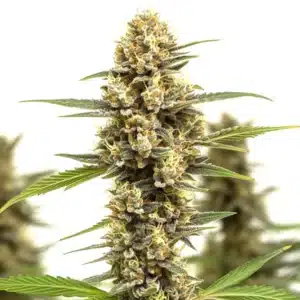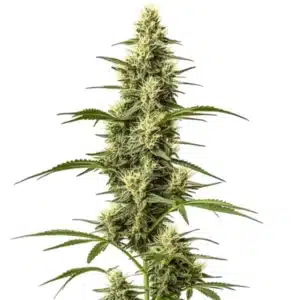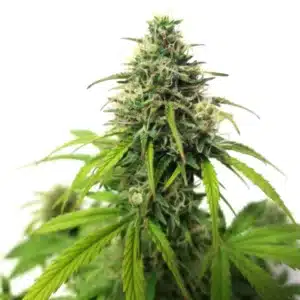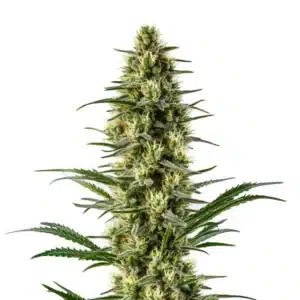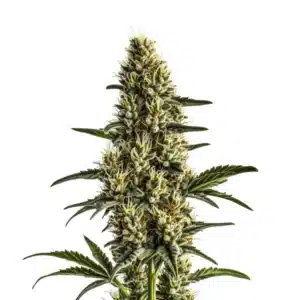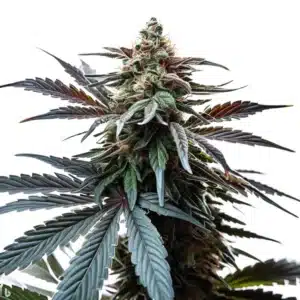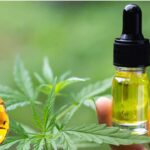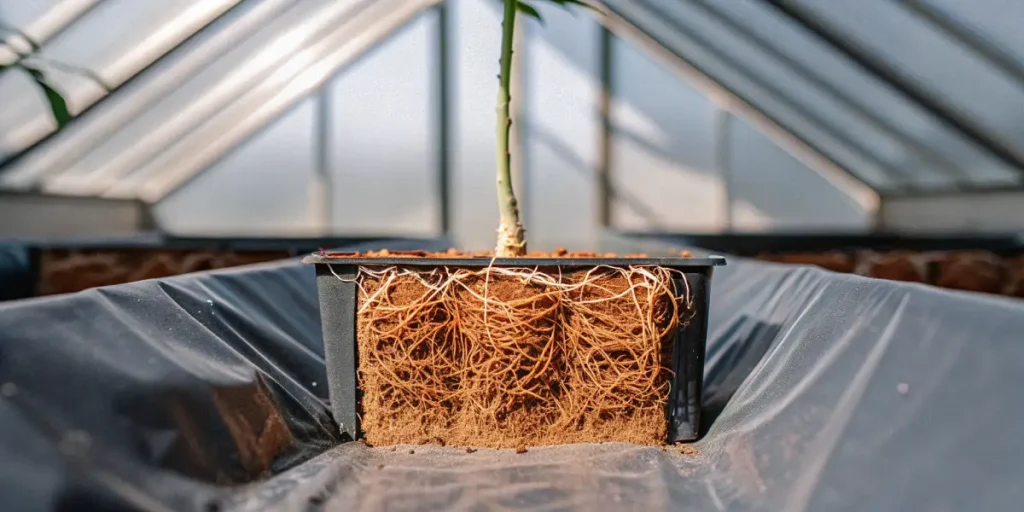
Nitrogen Metabolism in Cannabis Plants
Nitrogen is a critical element in the growth and development of cannabis plants. It serves as a foundational building block for amino acids, proteins, and chlorophyll, making it essential for photosynthesis and overall plant health. Without proper nitrogen metabolism, cannabis plants struggle to thrive, leading to stunted growth and reduced yields.
For first-time growers, the concept of nitrogen metabolism in cannabis plants might seem complex. However, it’s all about ensuring your plants have the right amount of nitrogen at the right time. This involves understanding how cannabis plants uptake and utilize nitrogen, as well as recognizing signs of nitrogen deficiency or excess.
Recommended Strains
GG4
|
|
THC | 27% (High) |
|
|
Type | Feminized |
|
|
Yield | High |
|
|
Phenotype | 40% Indica / 60% Sativa |
Blue Dream
|
|
THC | 17% - 24% (Medium) |
|
|
Type | Feminized |
|
|
Yield | High |
|
|
Phenotype | 50% Indica / 50% Sativa |
Experienced growers know the importance of optimizing nitrogen levels for robust cannabis growth. By mastering nitrogen metabolism pathways in cannabis, you can significantly enhance the quality and quantity of your harvest. Let’s explore the practical aspects of nitrogen management in cannabis cultivation.
Nitrogen Uptake in Cannabis Cultivation
Nitrogen uptake in cannabis cultivation begins with the roots. Cannabis plants absorb nitrogen primarily in the form of ammonium (NH4+) and nitrate (NO3-). These nutrients are transported from the soil through the plant’s vascular system to support various physiological processes.
Efficient nitrogen uptake is crucial for healthy cannabis growth. Factors such as soil pH, temperature, and moisture levels can influence how well your plants absorb nitrogen. Therefore, maintaining optimal growing conditions is key to maximizing nitrogen uptake and ensuring vigorous plant development.
In the context of nitrogen metabolism in cannabis plants, each stage of growth demands different nitrogen levels. Seedlings and vegetative plants require more nitrogen for cell division and growth, while flowering plants need reduced nitrogen to focus on bud production. Balancing this uptake through each stage can significantly affect the plant’s overall health and yield.
Additionally, the type of growing medium used can impact nitrogen uptake in cannabis cultivation. Hydroponic systems often require more precise adjustments to nutrient formulations than soil-based systems, where organic matter can naturally buffer nutrient availability. Understanding these nuances can help growers optimize nutrient delivery to their plants.
Promos & Deals
Optimizing Nitrogen Levels for Cannabis Growth
Balancing nitrogen levels is an art. Too little can lead to nitrogen deficiency in cannabis plants, characterized by yellowing leaves and poor growth. On the other hand, excess nitrogen can cause dark green foliage and delayed flowering, negatively impacting the plant’s overall health and productivity.
Striking the right balance involves regular monitoring of your plants and soil. Soil tests can help determine the existing nitrogen levels, allowing you to adjust your feeding regimen accordingly. Using organic fertilizers or nitrogen-rich amendments like compost can further enhance nitrogen availability.
Optimizing nitrogen levels for cannabis growth also involves understanding the specific requirements of each strain. Some strains are naturally more nitrogen-hungry, while others thrive with minimal nitrogen inputs. Tailoring your approach to each strain can prevent common issues like nitrogen deficiency in cannabis plants.
Moreover, environmental factors such as light intensity and CO2 levels can influence nitrogen metabolism in cannabis plants. Adjusting these variables in conjunction with nutrient management can lead to more efficient nitrogen use, promoting robust growth and maximizing yields.

Nitrogen Metabolism Pathways in Cannabis
Within the plant, nitrogen is metabolized through complex pathways. Once absorbed, it is incorporated into amino acids, the building blocks of proteins. These proteins play a vital role in plant structure and function, influencing everything from cell division to enzyme activity.
Chlorophyll synthesis is another crucial aspect of nitrogen metabolism in cannabis plants. Chlorophyll is responsible for capturing light energy during photosynthesis. Without adequate nitrogen, chlorophyll production suffers, leading to reduced photosynthetic efficiency and limited energy for growth.
Knowing nitrogen metabolism pathways in cannabis is essential for breeders aiming to develop strains with enhanced growth characteristics. By selecting for traits that improve nitrogen use efficiency, breeders can create plants that thrive in diverse growing conditions, leading to more sustainable cultivation practices.
Research into nitrogen metabolism pathways in cannabis can also uncover ways to reduce nutrient runoff and environmental impact. By optimizing how plants metabolize nitrogen, growers can minimize the use of synthetic fertilizers, promoting eco-friendly cultivation practices.
Effects of Excess Nitrogen on Cannabis Plants
While nitrogen is essential, too much of it can be detrimental. Excess nitrogen leads to lush, dark green foliage but can delay flowering, reduce bud size, and increase susceptibility to pests and diseases. This condition, often termed “nitrogen toxicity,” can significantly affect yield and quality.
Monitoring plant appearance is crucial. If you notice overly dark leaves or excessive vegetative growth, it might be time to adjust your feeding schedule. Reducing nitrogen inputs and flushing the soil with water can help alleviate symptoms of nitrogen toxicity.
Another effect of excess nitrogen on cannabis plants is the potential for nutrient lockout, where an imbalance of nutrients prevents the plant from absorbing essential elements. This can exacerbate other deficiencies, further impacting plant health and yield.
Cultivators should also be aware that over-fertilization not only affects the plant’s health but can also lead to increased environmental impact through nutrient runoff. Implementing precise nutrient management strategies helps prevent such issues and promotes sustainable growing practices.
Nitrogen Deficiency in Cannabis Plants
Nitrogen deficiency is a common issue in cannabis cultivation. It manifests as yellowing leaves, starting from the bottom and moving upwards. This occurs because nitrogen is a mobile nutrient, meaning the plant moves it from older to newer leaves when supplies are low.
Addressing nitrogen deficiency involves increasing nitrogen inputs. Using high-nitrogen fertilizers or organic amendments like blood meal or fish emulsion can quickly remedy the situation. Ensuring proper watering practices and soil health will also enhance nitrogen uptake.
To prevent nitrogen deficiency in cannabis plants, growers should regularly monitor leaf color and growth rates. Early detection allows for timely intervention, minimizing any potential impact on the plant’s overall health and productivity.
Furthermore, understanding the nitrogen metabolism pathways in cannabis can help growers anticipate deficiency risks during critical growth phases. By adjusting nutrient inputs based on growth stage demands, cultivators can maintain optimal nitrogen levels throughout the plant’s lifecycle.
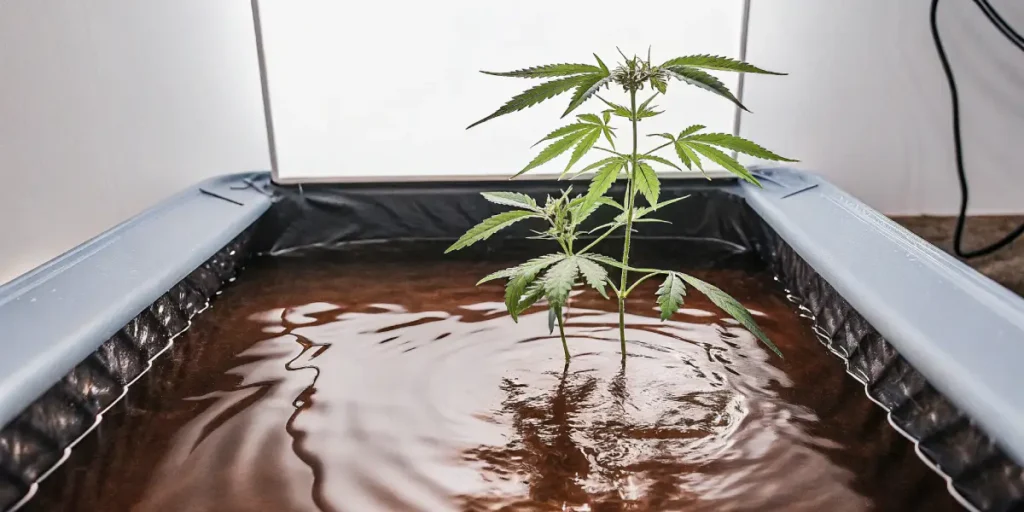
FAQs
How do I know if my cannabis plants have a nitrogen deficiency?
Signs of nitrogen deficiency in cannabis plants include yellowing leaves, particularly at the bottom of the plant. This yellowing gradually progresses upwards as the plant reallocates nitrogen to new growth. Stunted growth and reduced leaf size are also common indicators.
To confirm nitrogen deficiency, assess the overall health of your plant and consider conducting a soil test. This will provide a clear picture of the nutrient levels in your growing medium, allowing you to adjust your feeding strategy accordingly.
Regularly monitoring your plants for signs of nitrogen deficiency is crucial, especially during the vegetative stage when nitrogen demands are highest. Keeping detailed records of nutrient applications and plant responses can help identify patterns and prevent future deficiencies.
Besides to visual inspection and soil testing, growers can use foliar analysis to detect subtle nutrient imbalances. This method provides rapid feedback on plant health, allowing for quick corrective actions to maintain optimal nitrogen metabolism in cannabis plants.
Can excess nitrogen harm my cannabis plants?
Yes, too much nitrogen can harm your cannabis plants. Excess nitrogen leads to dark green leaves, delayed flowering, and can reduce bud quality and size. This condition, known as nitrogen toxicity, also makes plants more prone to pests and diseases.
To mitigate excess nitrogen, reduce fertilizer application and flush the growing medium with water. This helps remove excess nutrients from the soil, allowing your plants to recover and resume healthy growth.
Excess nitrogen can also lead to an imbalance in other nutrient levels, further complicating plant health. Consistent monitoring and adjusting of nutrient inputs can prevent such imbalances, promoting a stable growing environment.
Preventing excess nitrogen is also important for maintaining the overall quality of the final product. High nitrogen levels late in the flowering stage can affect flavor profiles and cannabinoid concentrations, impacting both the potency and taste of your harvest.
What are the best practices for optimizing nitrogen levels?
Optimizing nitrogen levels involves regular monitoring of plant health and soil conditions. Conduct soil tests to assess nutrient levels and adjust fertilization practices based on the results. Using organic fertilizers can provide a balanced nutrient supply.
Choose cannabis strains that are well-suited to your growing conditions. Some strains naturally require more or less nitrogen, so selecting the right variety can simplify nitrogen management. Regular observation and timely adjustments are key to successful nitrogen optimization.
Implementing a feeding schedule that aligns with the plant’s growth stages can also aid in optimizing nitrogen levels for cannabis growth. Adjusting nutrient ratios to cater to the plant’s needs at each phase can enhance overall vitality and productivity.
Incorporating cover crops and beneficial microbes can improve soil health, enhancing nitrogen availability and uptake. These practices support sustainable cultivation by reducing reliance on synthetic fertilizers and promoting natural nutrient cycling.
How does nitrogen metabolism affect cannabis yield?
Nitrogen metabolism directly impacts cannabis yield by influencing photosynthesis, growth, and flower development. Proper nitrogen levels ensure vigorous vegetative growth, leading to larger plants capable of supporting more buds.
However, both deficiency and excess can reduce yield. Balancing nitrogen through careful nutrient management and monitoring can maximize the quantity and quality of your harvest, ensuring healthy, productive plants.
Effective nitrogen metabolism in cannabis plants is crucial for achieving high yields and potent buds. By fine-tuning nitrogen inputs, growers can optimize energy production and allocation, resulting in more resinous and aromatic flowers.
Furthermore, understanding the relationship between nitrogen metabolism pathways in cannabis and other nutrient cycles can help growers achieve a holistic balance, ensuring that no single nutrient limits the plant’s potential.
Are there cannabis strains that handle nitrogen fluctuations better?
Some cannabis strains are more resilient to nitrogen fluctuations than others. For example, Blimburn Seeds’ Gorilla Glue 4 is known for its hardiness and ability to tolerate varying nutrient levels without significant stress.
When selecting strains, consider your experience level and growing conditions. Opt for varieties that match your ability to manage nutrients effectively, ensuring a successful and rewarding cultivation experience.
Strains that handle nitrogen fluctuations well often exhibit robust root systems and adaptable growth patterns. These traits make them ideal candidates for growers experimenting with different nutrient regimens or environmental conditions.
By choosing resilient strains, novice growers can focus on developing their skills without the added pressure of managing precise nutrient levels. This approach allows for a more forgiving learning curve, leading to successful harvests.




